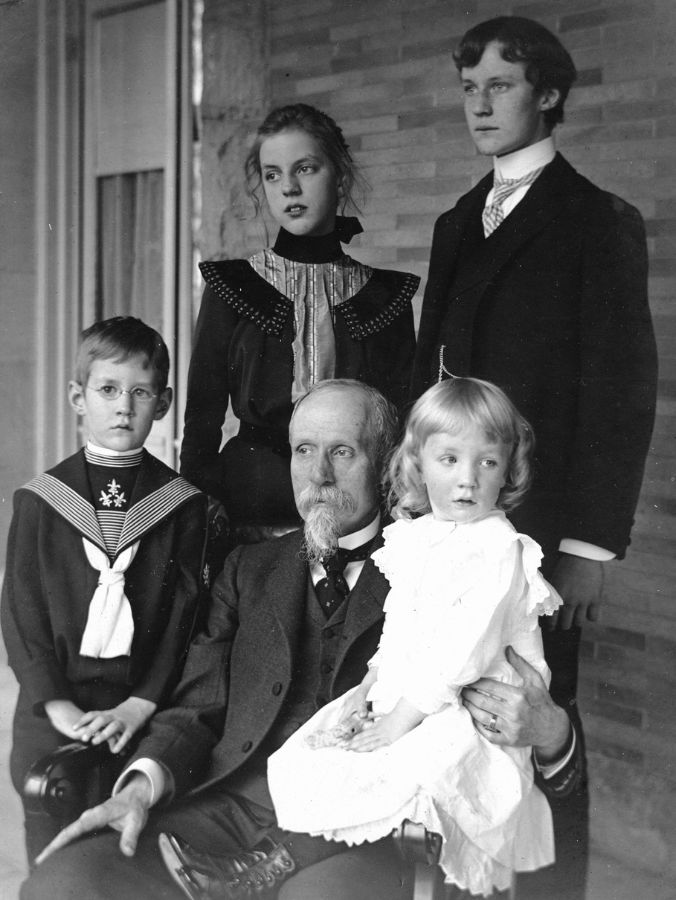-
Who We Are
Who We Are
For the last century, we’ve dedicated ourselves to empowering families like yours to prosper and endure. Like many of the leading families we serve, we have been through our own wealth journey.
Discover Pitcairn -
What We Do
Wealth Momentum®
The families we serve and the relationships we have with them are at the center of everything we do. Our proprietary Wealth Momentum® model harnesses the most powerful drivers of financial and family dynamics, maximizing the impact that sustains and grows wealth for generations to come.
Explore - Insights & News

You’ve probably heard that it’s a good idea to set up a trust, but if you don’t understand the words people use when they talk about trusts, you probably won’t want to put your assets into one.
After all, one of the first principles of personal finance is to understand what’s happening with your money. You should be educated and empowered to work as a partner with the financial professionals you hire and understand their recommendations — not follow them on blind faith.
With that in mind, here are some of the most important terms to learn on your way to gaining a better understanding of trusts and how they can safeguard your property.
1. Trust
A trust is established when one party, known as the grantor, gives a fiduciary, known as the trustee, the right to hold assets and property for the beneficiary of the trust. The trustee you name can be either an individual, an institution, or both.
You get to decide which assets go into the trust, who the trustee is, how the trustee manages the trust’s assets, who can receive the trust’s assets, and when they can receive them. You can establish multiple trusts for different purposes, too.
2. Trustee
A trustee is someone you name in your trust document to manage your trust assets. The trustee has a fiduciary responsibility to act in the trust beneficiary’s best interests.
In other words, the trustee is in charge of the money, real estate, or securities you put in the trust, but they can’t just buy and sell things in the trust or distribute the trust assets as they please. They have to follow the parameters you spell out in the trust documents and also exercise their own judgment.
3. Beneficiary
A beneficiary is an individual or other entity that will get some or all of the trust’s assets. A trust can have one or multiple beneficiaries, and they can be current, future, or remainder beneficiaries.
Current beneficiaries receive trust assets in the present, while future or remainder beneficiaries receive trust assets at some later date based on reaching a certain age, someone passing away, or another event spelled out in the trust documents — or based on the trustee’s judgment. Common beneficiaries include a spouse, child, or nonprofit organization.
4. Grantor
The grantor is the person who establishes the trust and owns the assets that will be placed in the trust. In the case of a revocable trust, the grantor may also be the trustee and the beneficiary.
5. Revocable Trust
Trusts fall into two main categories: Revocable and irrevocable. A revocable trust, also called a living trust, can be undone at any time by the grantor until the grantor passes away. When the grantor dies, the trust becomes irrevocable. However, during the grantor’s lifetime, the grantor maintains full control over the trust assets. A revocable trust provides more control but less asset protection than an irrevocable trust.
6. Irrevocable Trust
An irrevocable trust requires the grantor to relinquish control over the trust assets upon placing the assets into the trust. The grantor typically gives up this control for tax reasons, gift reasons, privacy reasons, or protection from creditors. The assets you place into an irrevocable trust are no longer yours.
An irrevocable trust is generally unchangeable once established. However, under modern trust law, you may be able to make certain minor changes to an irrevocable trust, depending on the state you establish the trust in (trust laws vary by state). An irrevocable trust provides less flexibility but greater asset protection than a revocable trust.
7. Mandatory Distributions
Mandatory distributions require the trustee to give certain assets to certain people (named beneficiaries) at certain times, whether it seems like a good idea at that time or not. For example, the trust provisions might say that when your daughter, now age 10, turns 30, she gets $250,000 no matter what.
8. Discretionary Distributions
If you’re thinking, “Wait: What if my daughter falls off the responsible path she’s on now?” then you understand why discretionary distributions exist.
As the grantor, you put assets into the trust to protect them. With mandatory distributions, maybe the $250,000 you want your daughter to receive at age 30 to buy a home or start a business would end up in the hands of a divorcing spouse.
Discretionary distributions give your trustee the power to use their best judgment about how much your beneficiaries get, when, and under what conditions. Discretionary distributions help protect beneficiaries from divorcing spouses, lawsuits, and their own irresponsible behavior.
Understanding Trust Terms and How a Trust Can Help
Now that you know these eight basic terms, are you starting to see how a trust can be a great way to protect your hard-earned assets? We’d love to have a conversation with you about your financial goals and how one or more trusts could help you achieve them.






